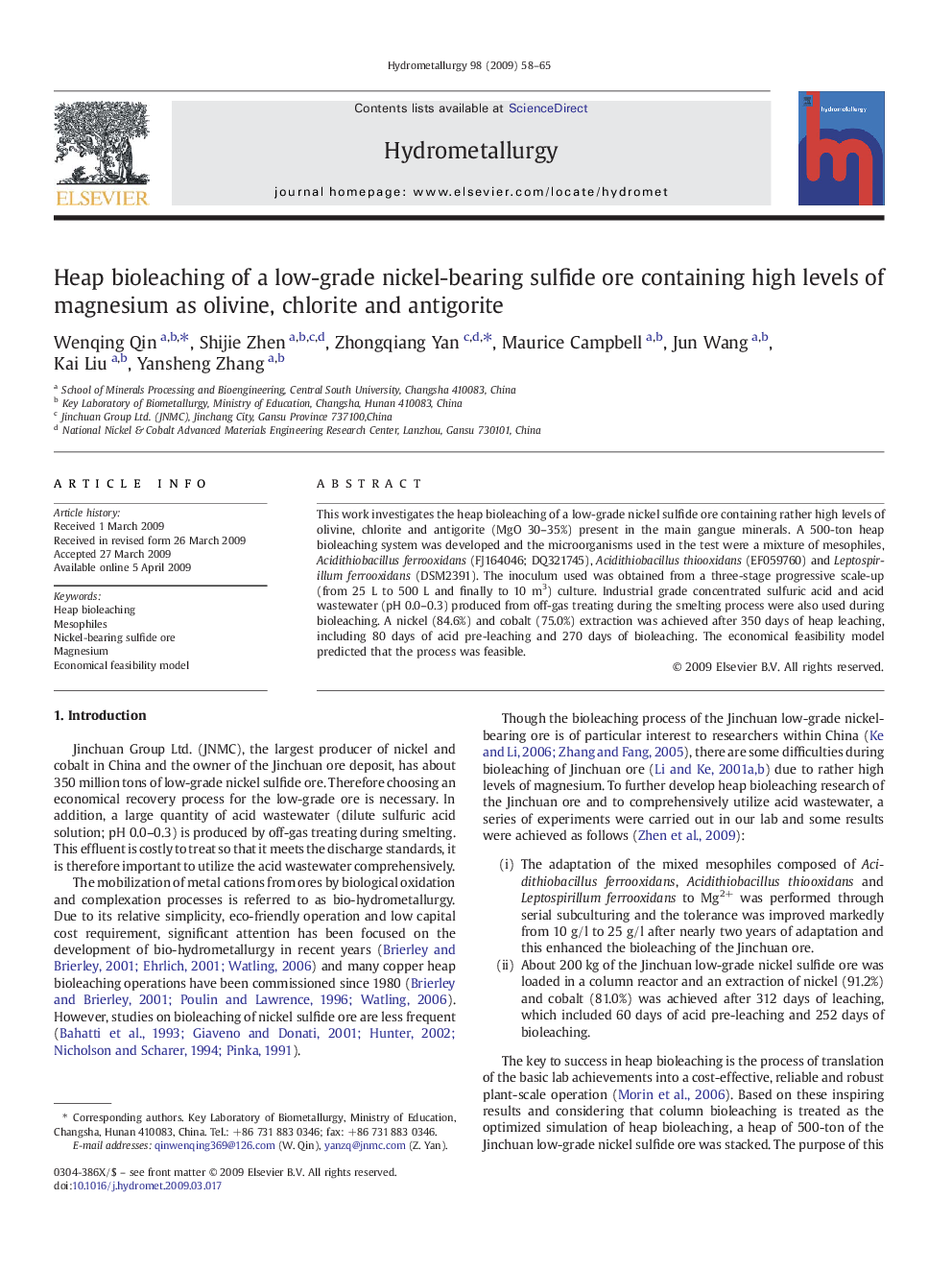| Article ID | Journal | Published Year | Pages | File Type |
|---|---|---|---|---|
| 212931 | Hydrometallurgy | 2009 | 8 Pages |
This work investigates the heap bioleaching of a low-grade nickel sulfide ore containing rather high levels of olivine, chlorite and antigorite (MgO 30–35%) present in the main gangue minerals. A 500-ton heap bioleaching system was developed and the microorganisms used in the test were a mixture of mesophiles, Acidithiobacillus ferrooxidans (FJ164046; DQ321745), Acidithiobacillus thiooxidans (EF059760) and Leptospirillum ferrooxidans (DSM2391). The inoculum used was obtained from a three-stage progressive scale-up (from 25 L to 500 L and finally to 10 m3) culture. Industrial grade concentrated sulfuric acid and acid wastewater (pH 0.0–0.3) produced from off-gas treating during the smelting process were also used during bioleaching. A nickel (84.6%) and cobalt (75.0%) extraction was achieved after 350 days of heap leaching, including 80 days of acid pre-leaching and 270 days of bioleaching. The economical feasibility model predicted that the process was feasible.
